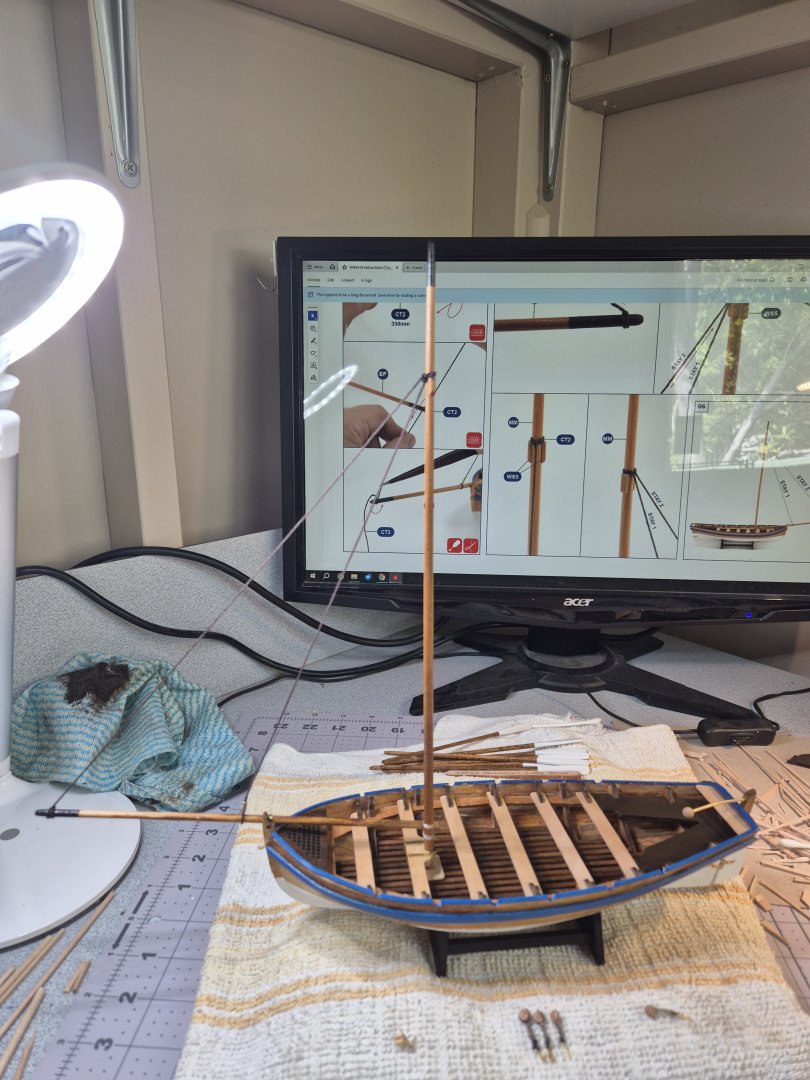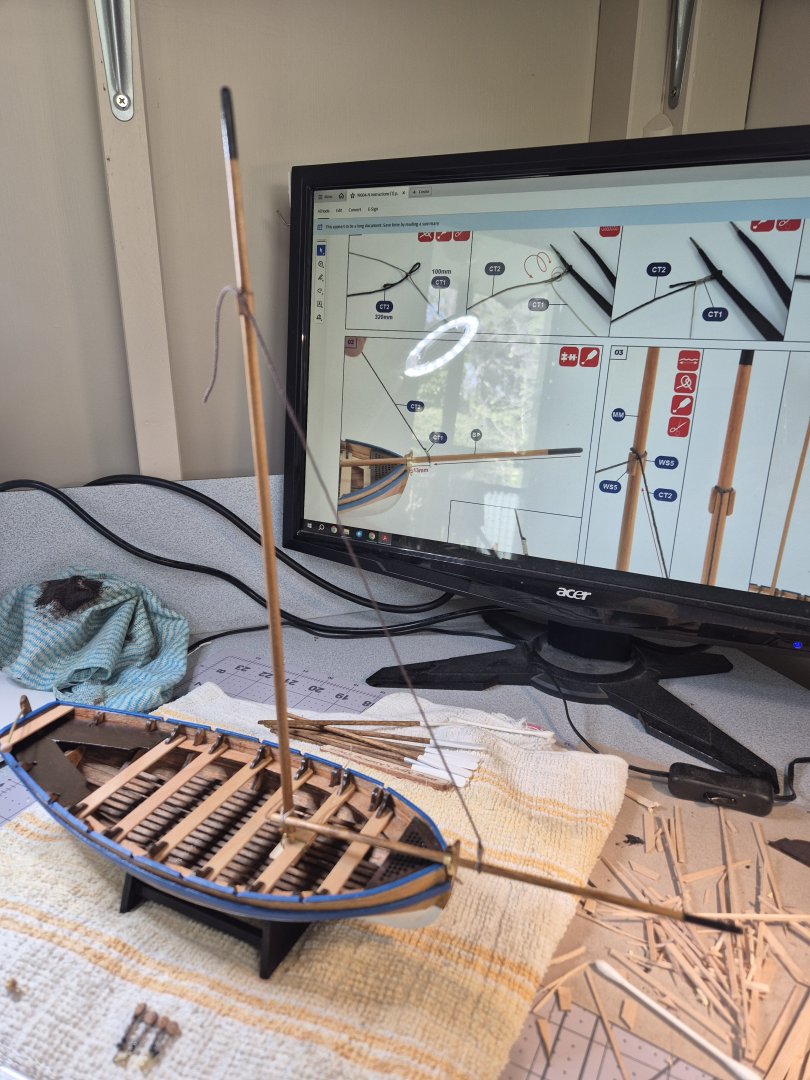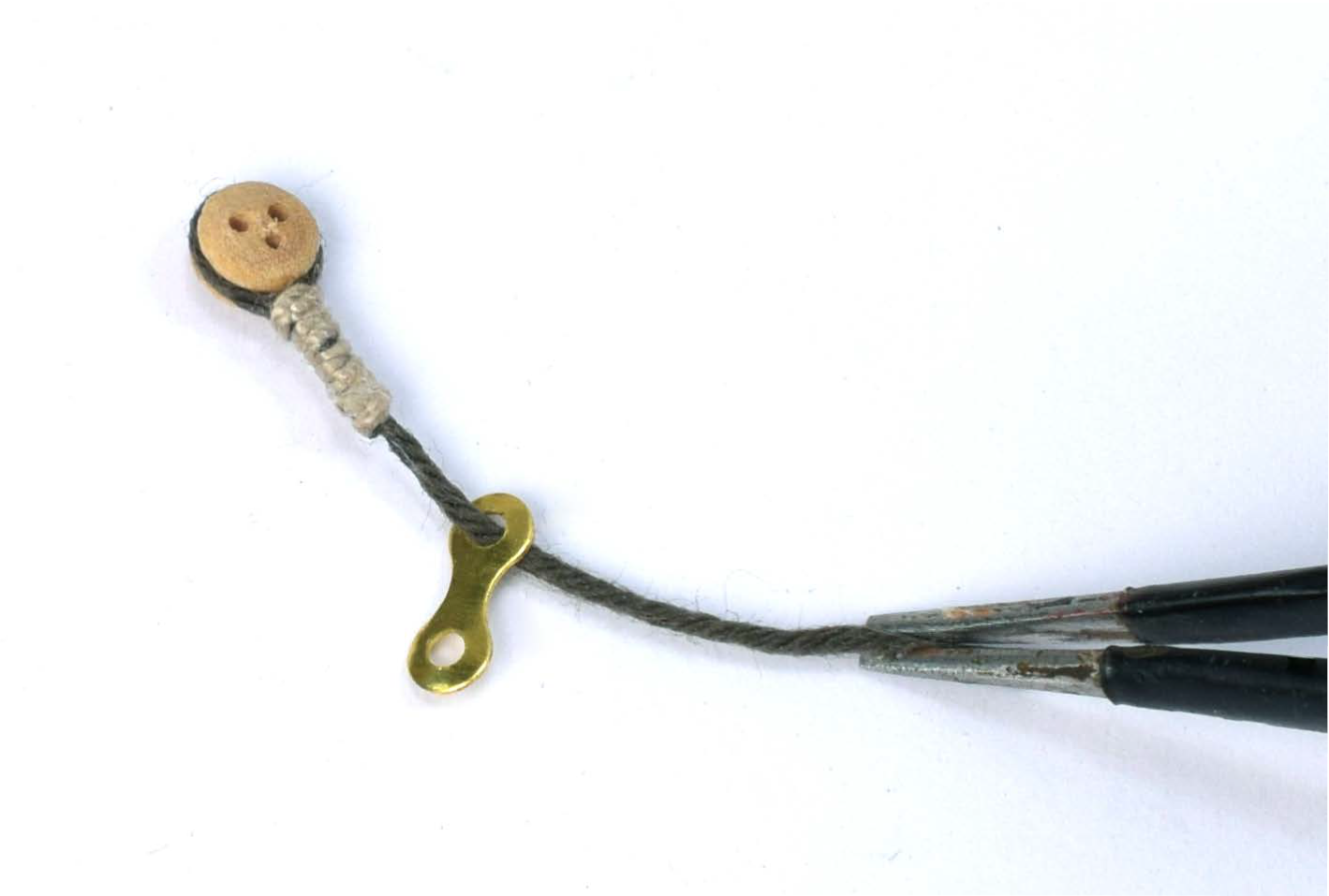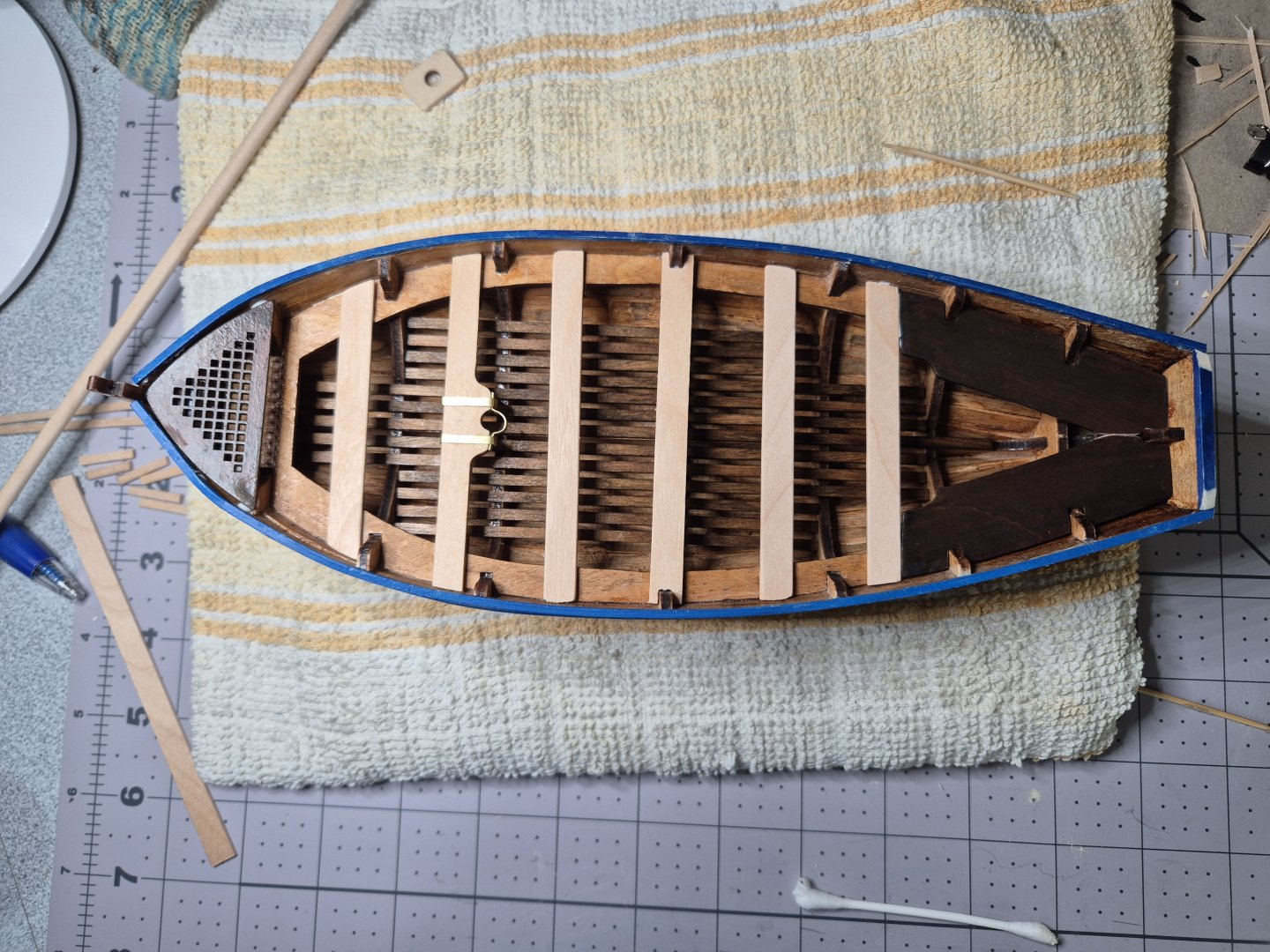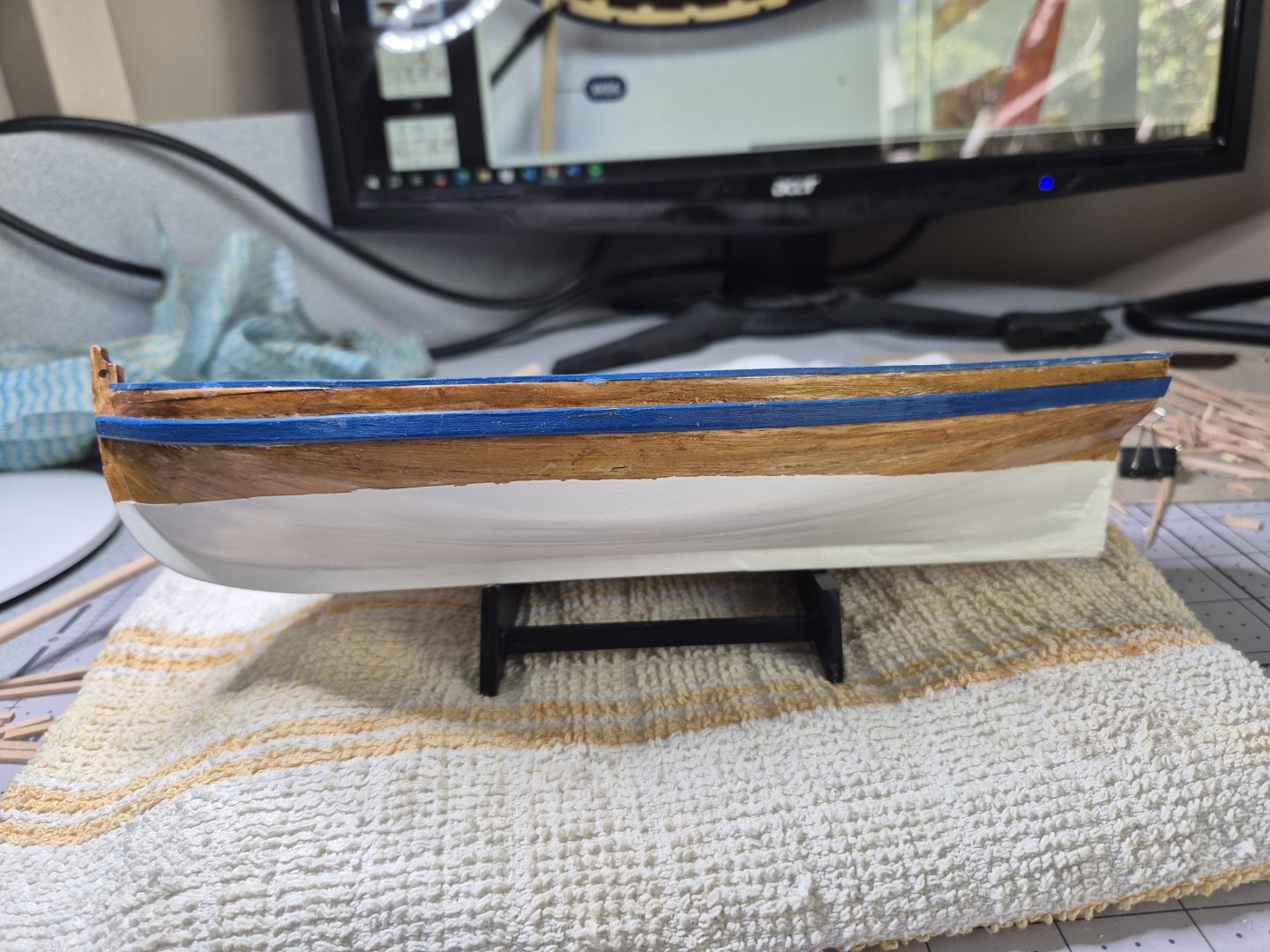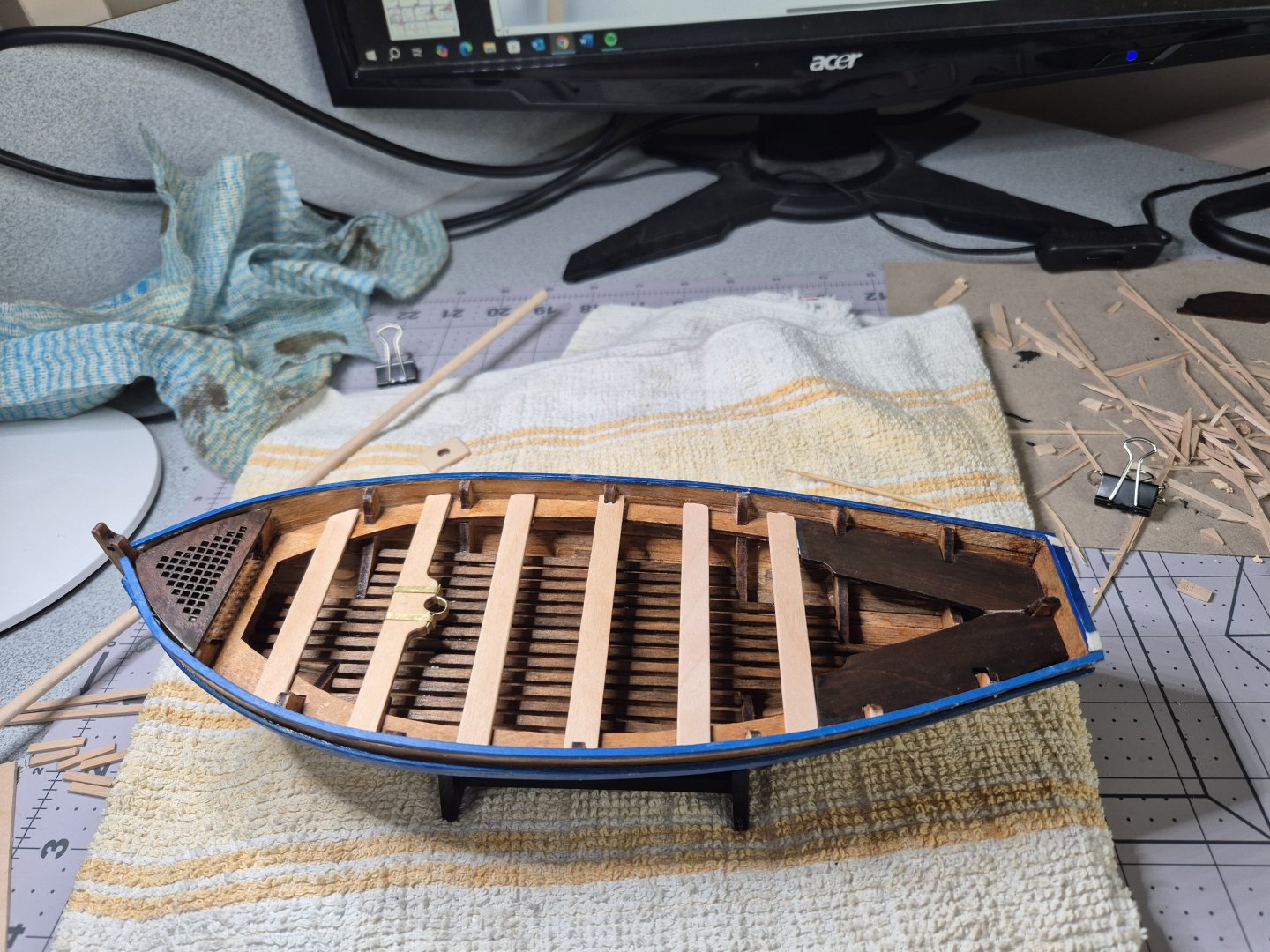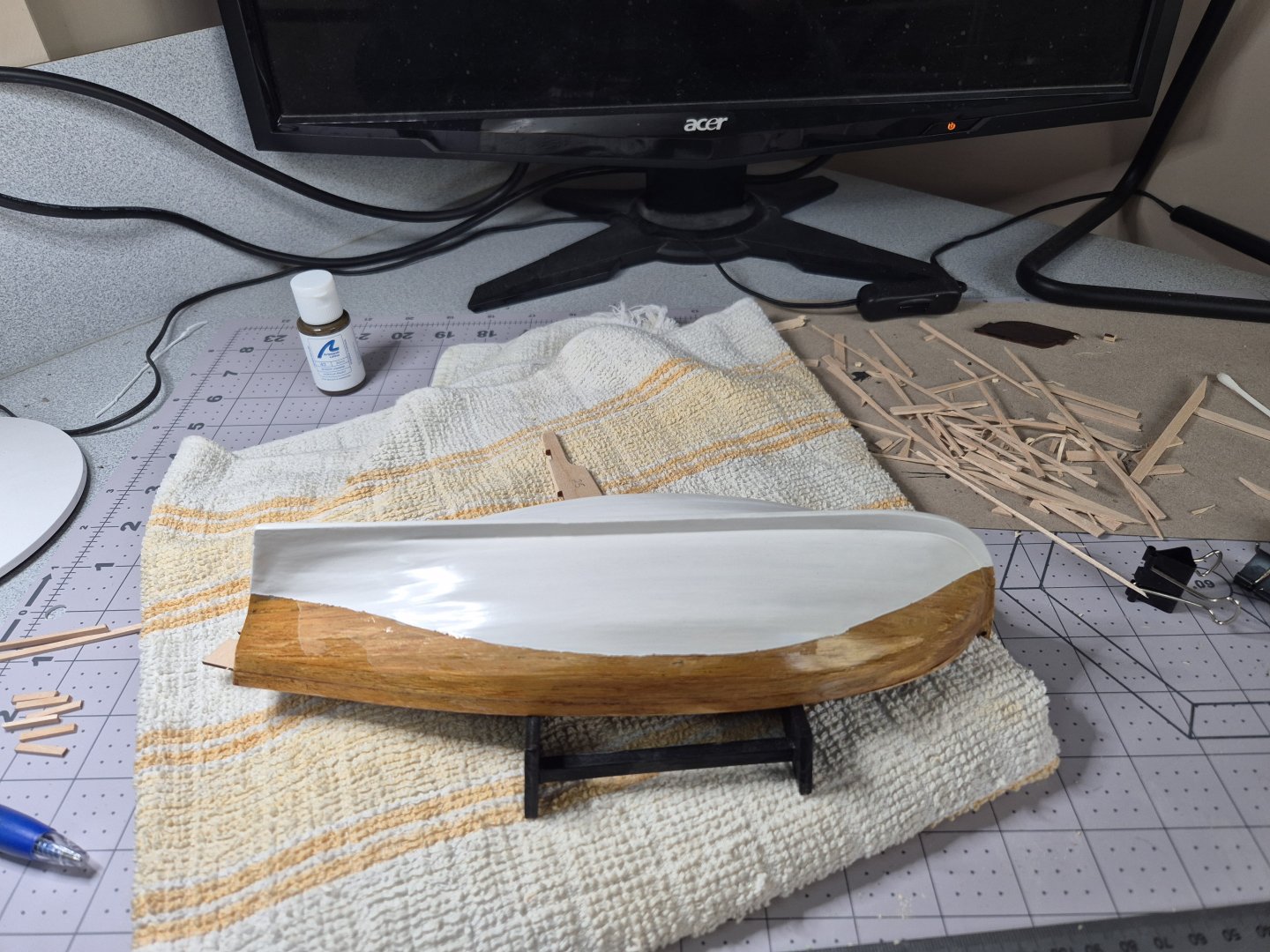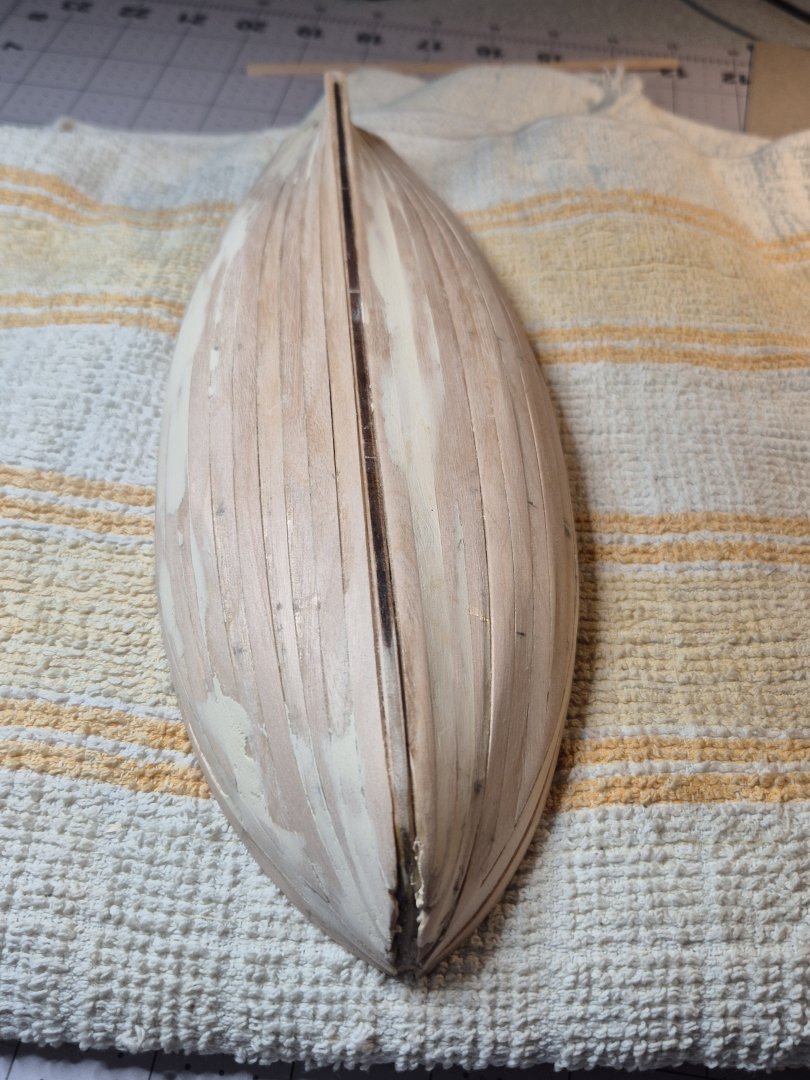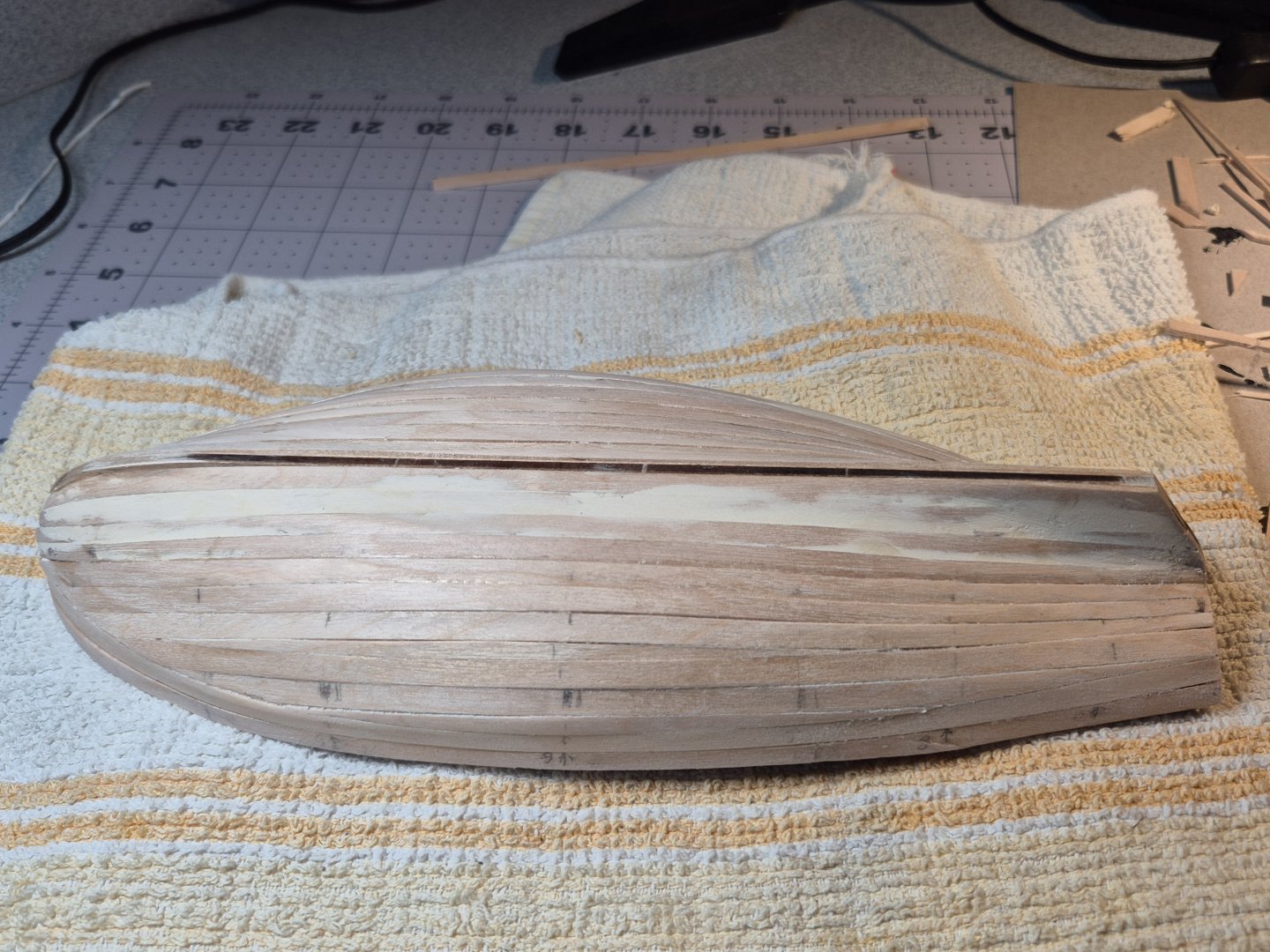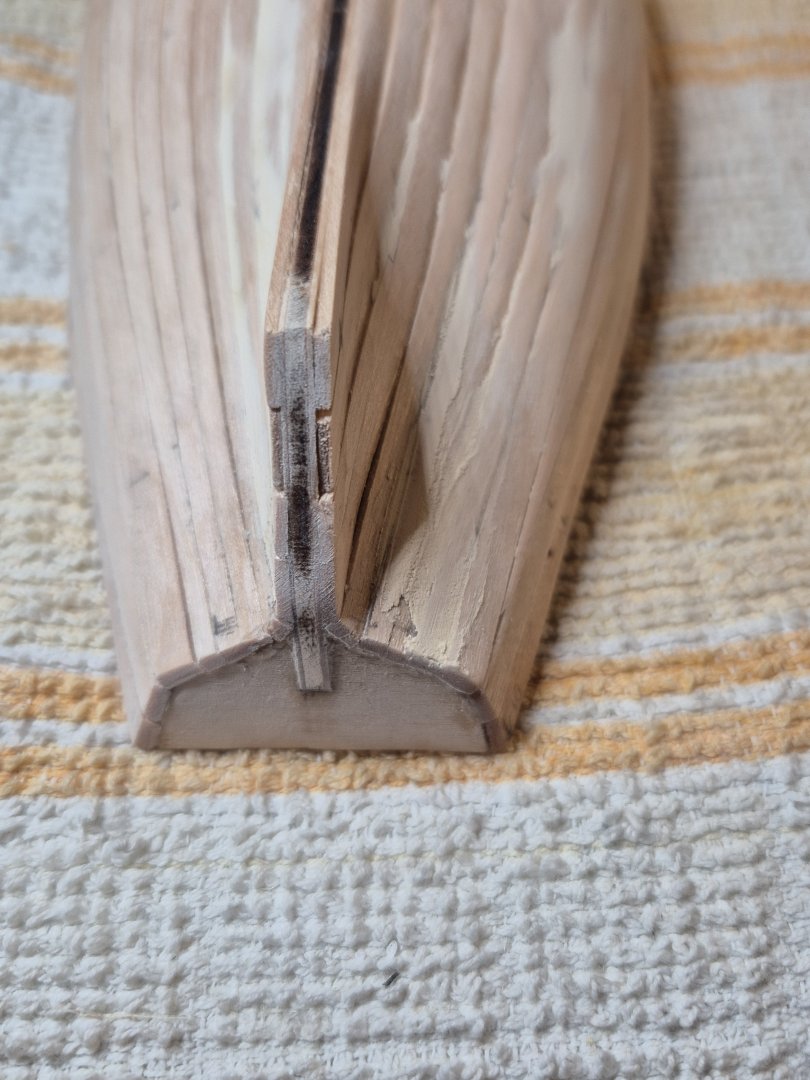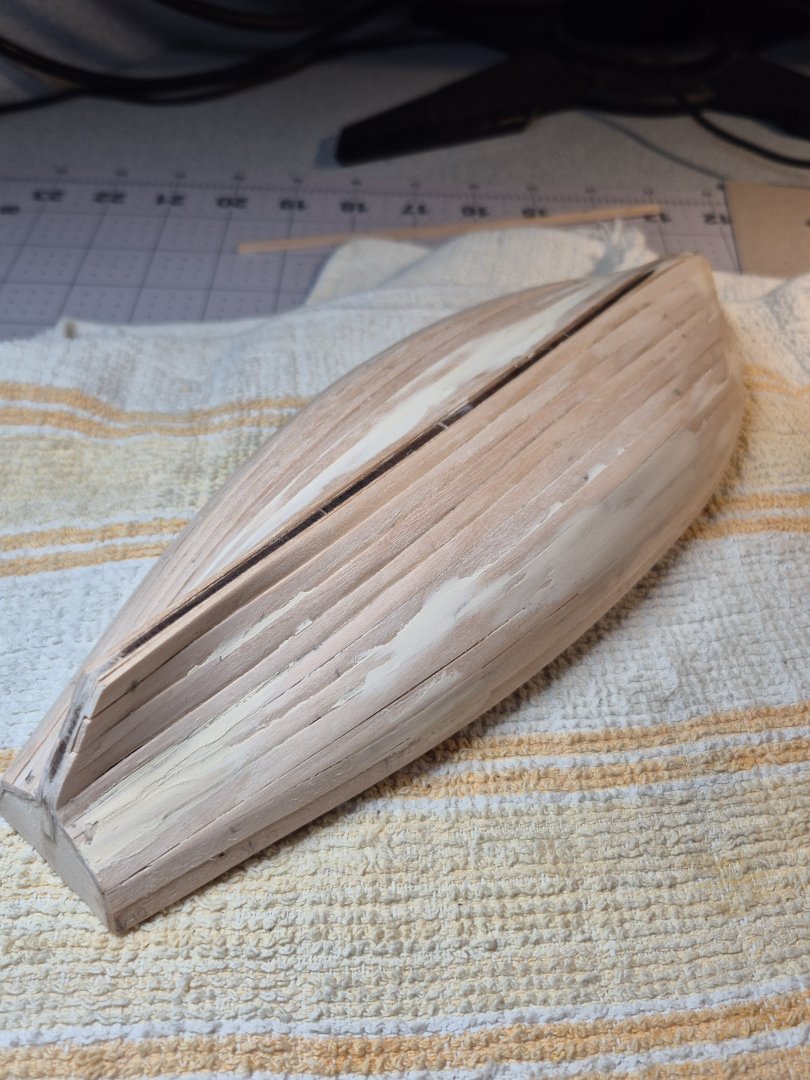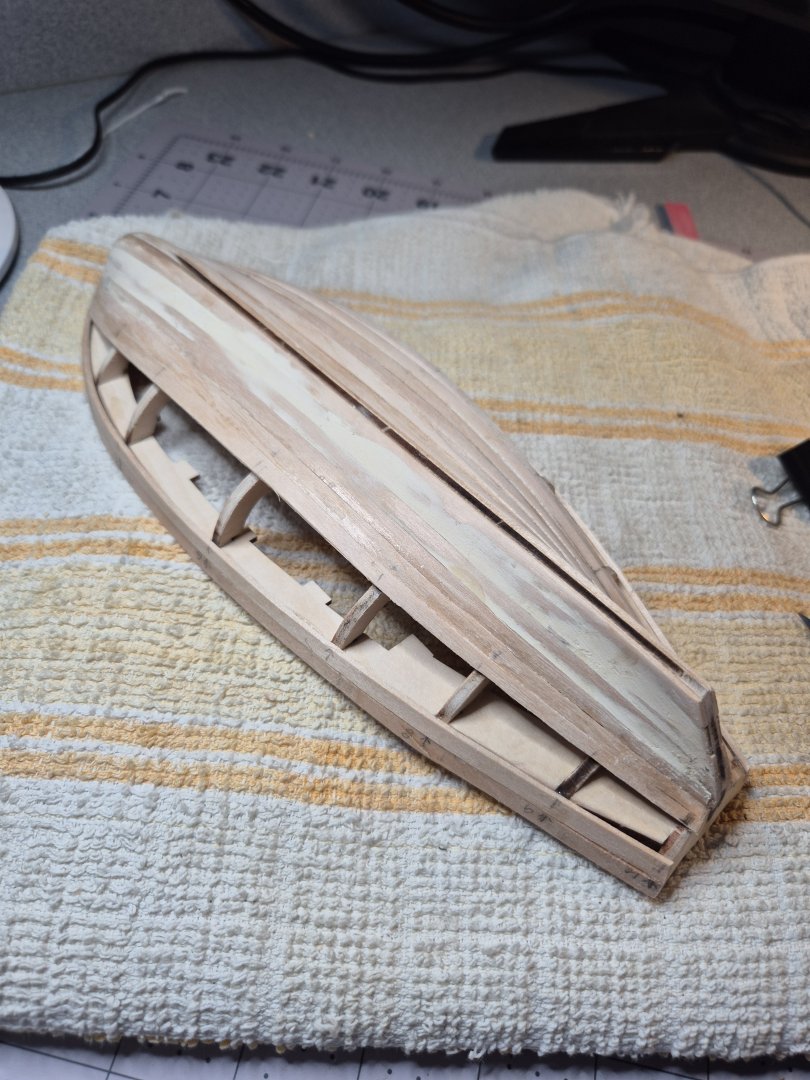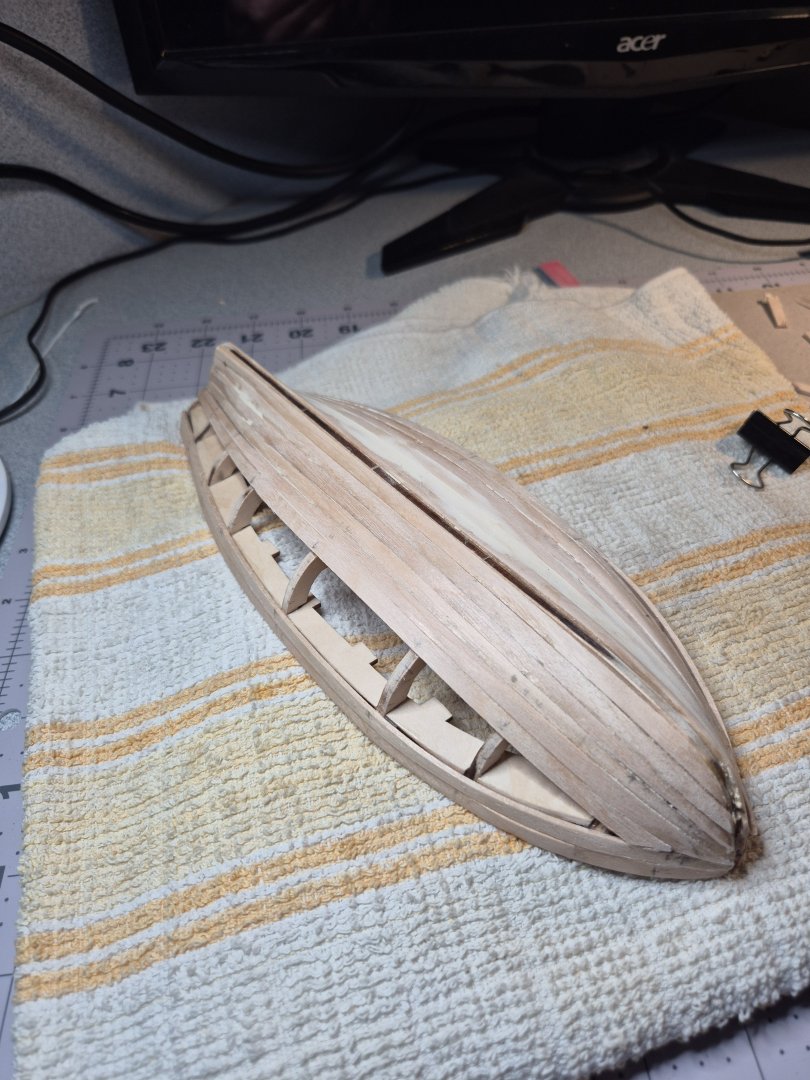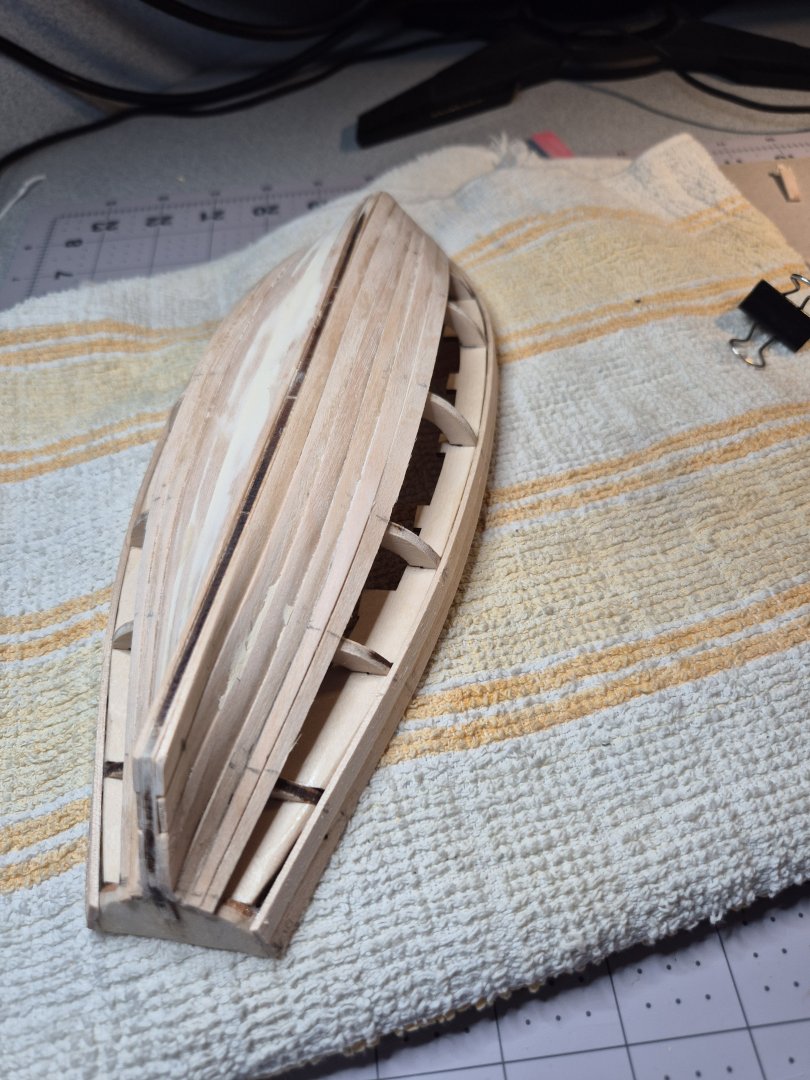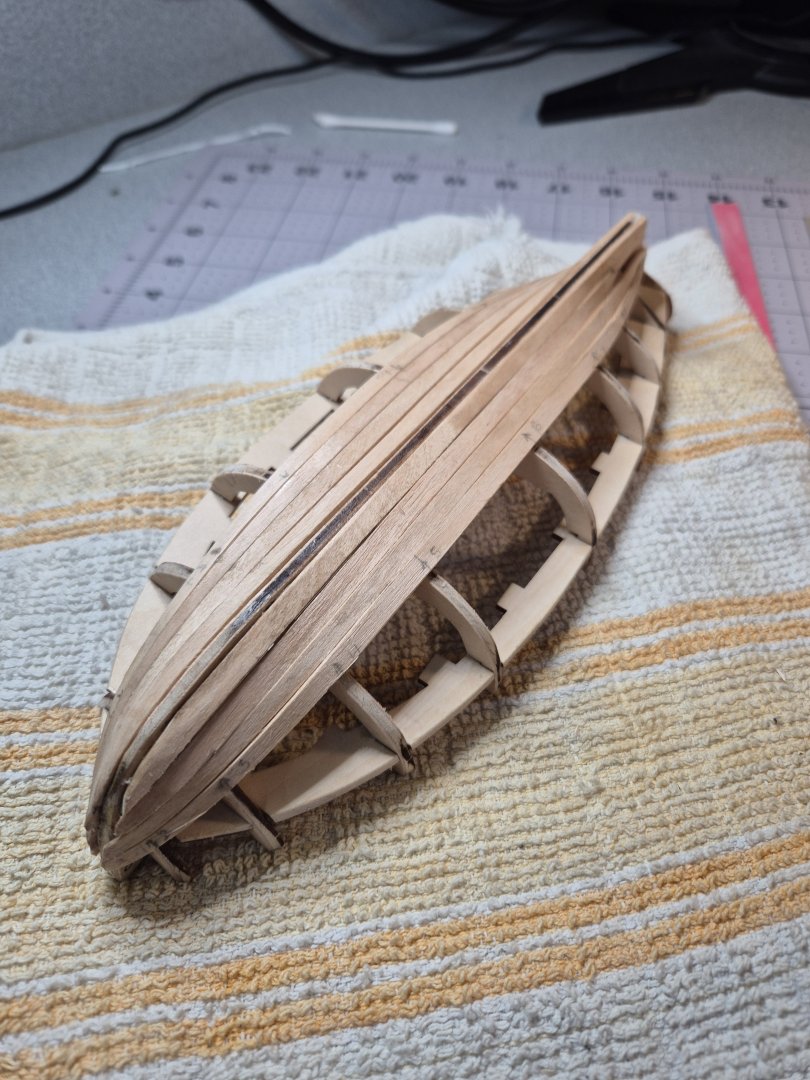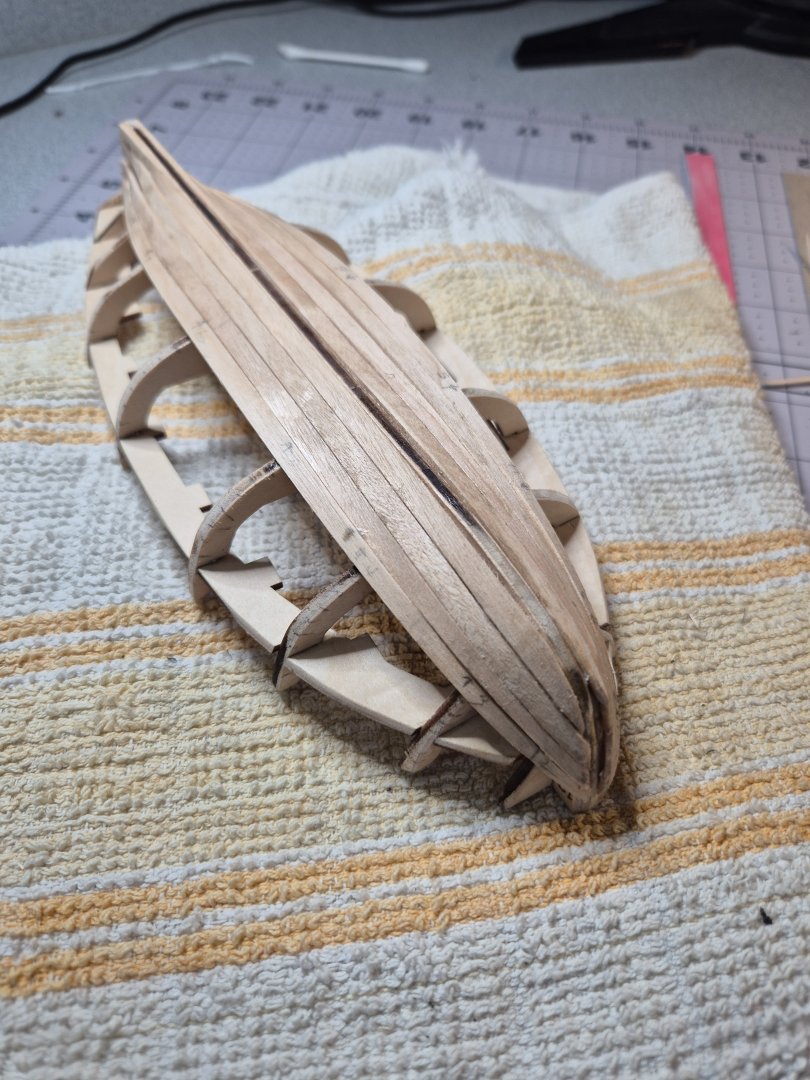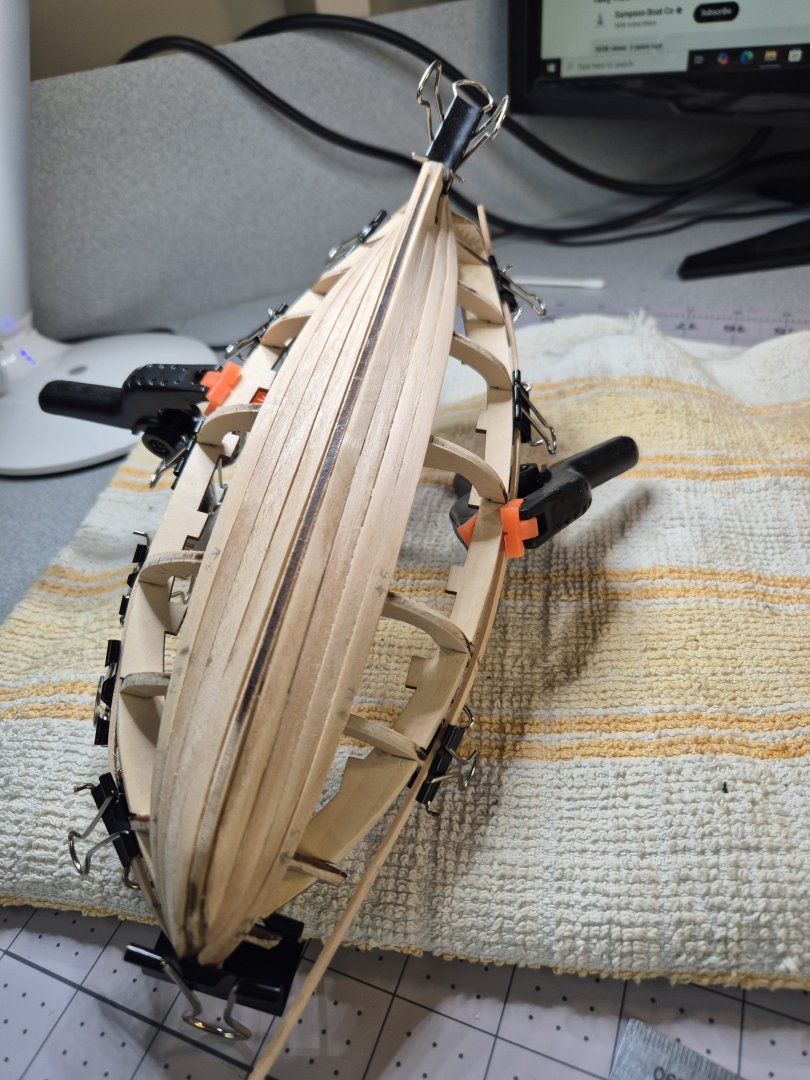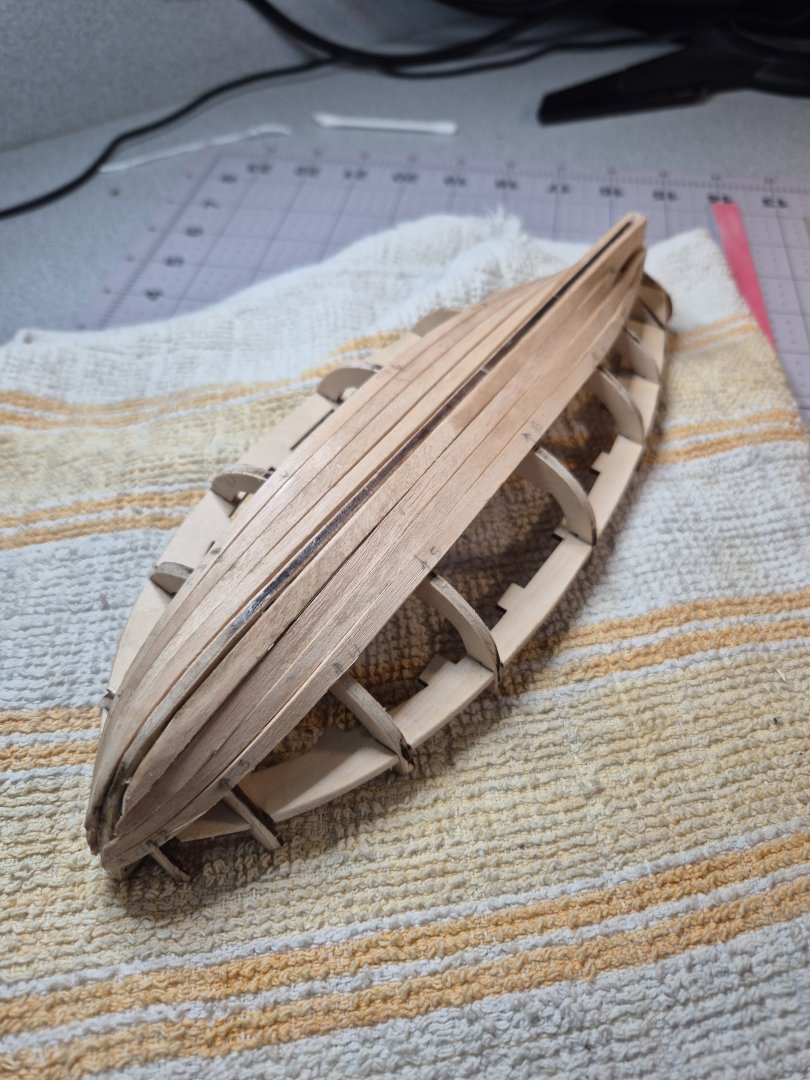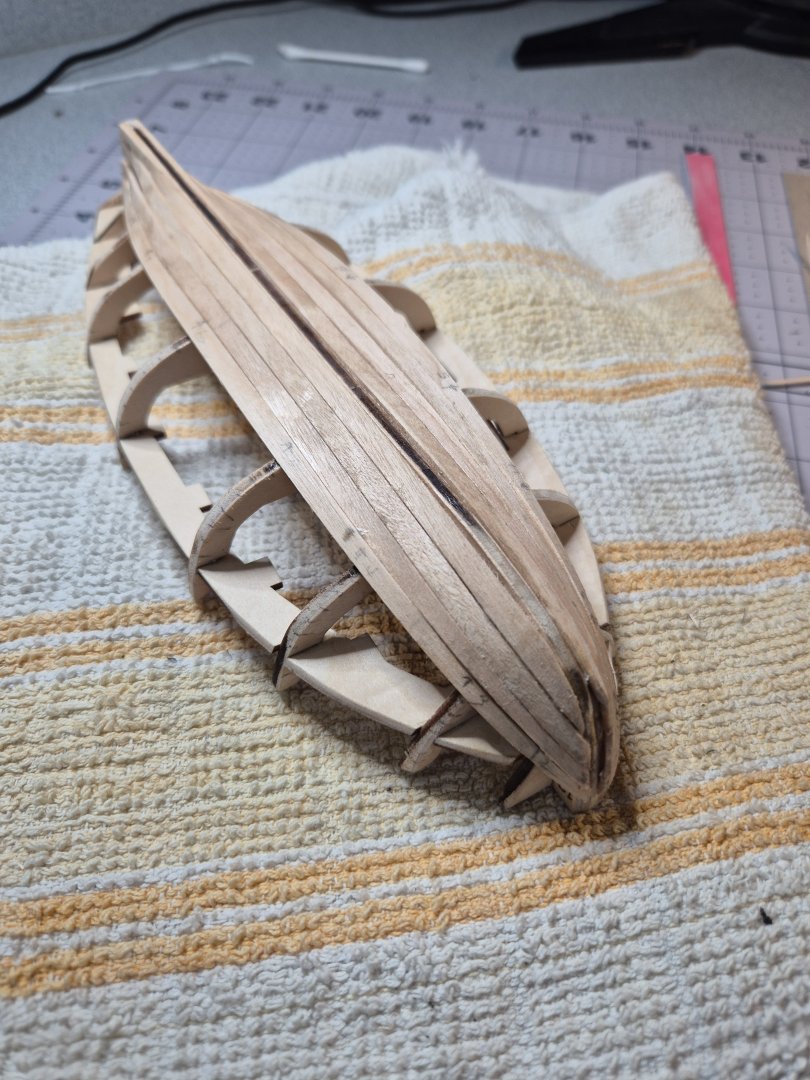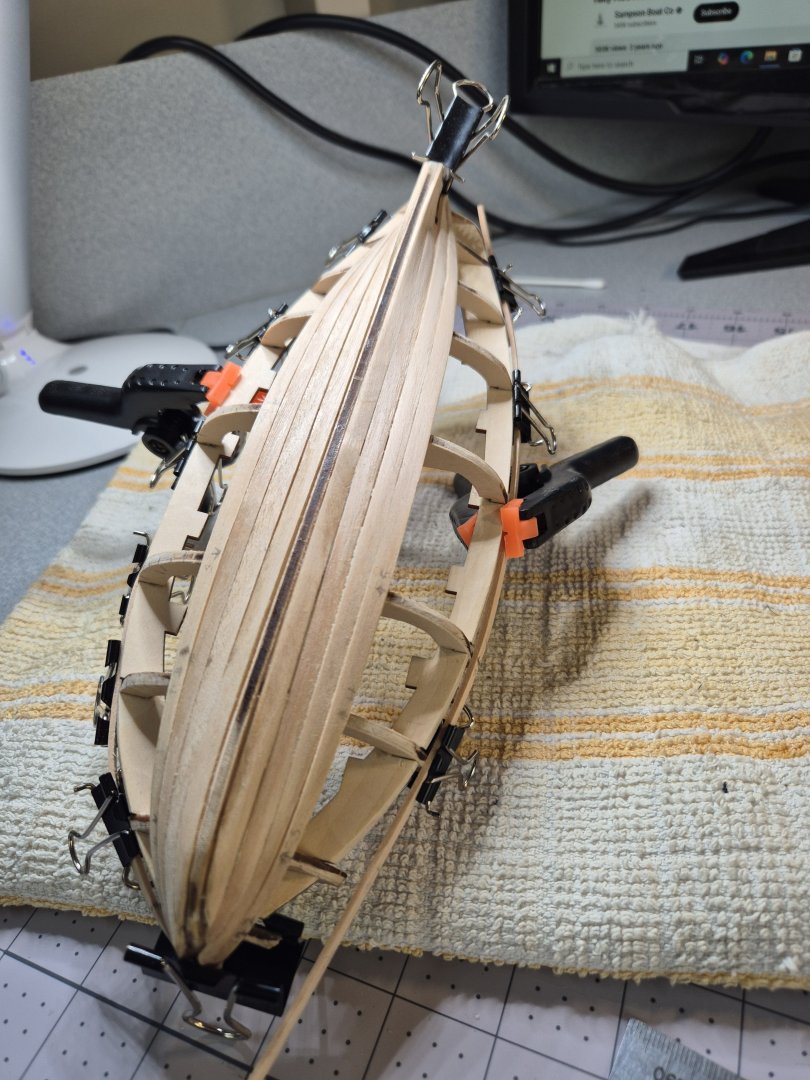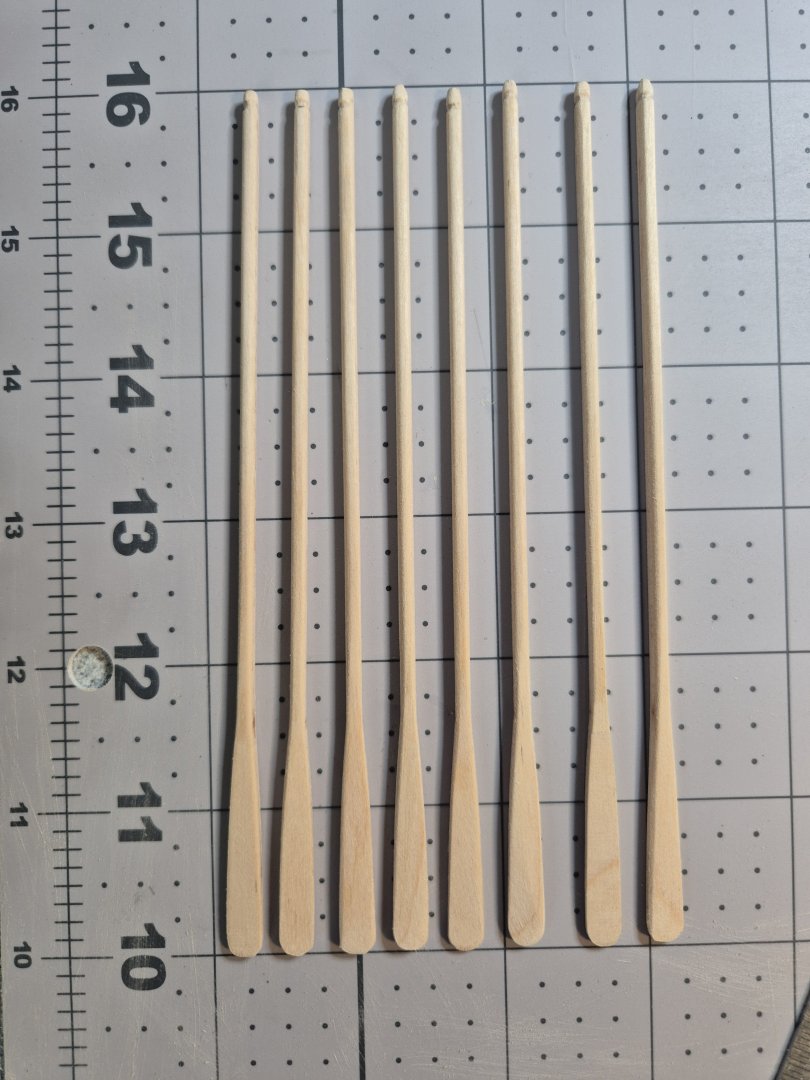
Peter S
Members-
Posts
37 -
Joined
-
Last visited
Content Type
Profiles
Forums
Gallery
Events
Everything posted by Peter S
-
Thanks 🙂 It was a great kit to have as my first model. Learnt heaps but know that there is so much more to learn. There are some fantastic modelers out there with extraordinary talents. I am happy with my results. Even though there are lots of things that could have been done better the outcome was better than I could have hoped. Obviously we are on the same wavelength! I have already purchased the next project which is Vanguard's HM Cutter Sherbourne. Will be starting that in the New Year after the festive season has settled down. Doing lots of reading and planning, etc. The good news is there are lots of videos and logs to look at and help guide through the construction. Will start a build long for this project as well. Appreciate your help and comments throughout the build.
- 48 replies
-
- bounty jolly boat
- Artesania Latina
-
(and 1 more)
Tagged with:
-
Finally finished or as far as I intend to go with this model. Really enjoyed building this model. It was very challenging and not everything worked out exactly as it should but am still pretty happy with the results. Surprisingly (at least to me) I found the sails the hardest part especially with the rings attached to the foresails. I really never got them right. Even though I ironed the sails they still show the original creases from when they were packaged. Might have to look at that if I ever build a kit with sails again. I decided not to use the flag provided, as I think that it detracts from the model. The other change I made was where the main sheet was attached. I noticed that a number of the logs added a wire horse to attach the main block but I decided just to attach the main block to the deck floor so that it was out of the way of the tiller. Learnt so much but know that there it will always be a learning process.
- 48 replies
-
- bounty jolly boat
- Artesania Latina
-
(and 1 more)
Tagged with:
-
Have been travelling overseas but have made some inroads since we got back. Making good progress, indeed, am almost finished hopefully will be able to show the completed job by the end of next week. Going away for a few days so have to wait until I get back. Got the two foresails installed. Had a lot of trouble with the tiny rings that attach to the sail and then to the forestays. Just couldn't get the rings to close around the forestay. Ended up leaving the top and bottom off! A few pics of what has been done to date. Next step is rigging the mainsail. Having issues loading the pics. They just get an error 200 from the server. Will need to try again later.
- 48 replies
-
- bounty jolly boat
- Artesania Latina
-
(and 1 more)
Tagged with:
-
Looking really good. I hope to be starting my build of Sherbourne in the new year after I finish my Bounty Jolly Boat build (getting very close). Have been following your progress and like what you have done so far and am always interested in the experiences that you encounter along the way. Your paint job is awesome. Did you use a brush or spray? I have also found it difficult to get wipe on poly here in Australia. (I might not be looking in the right places!)
- 21 replies
-
- Vanguard
- Sherbourne;
-
(and 1 more)
Tagged with:
-
Have been making a little progress. Lots of outdoor projects with the admiral are taking most of the time at the moment. Also about to head overseas for a few weeks so no further progress until I get back. However, the good news is that all the stays and deadeyes are now installed. Found that adding some CA to the end of the thread and then running my fingers along it makes it nice and stiff and much easier to push through the deadeye holes. Finally seeing the light at the end of the tunnel. Next step is installing the sails.
- 48 replies
-
- bounty jolly boat
- Artesania Latina
-
(and 1 more)
Tagged with:
-
I did manage to get one of chainplates threaded more by luck than anything else. Put a tiny bit of CA onto the end of the thread and then was able to pass it through the eye of the chain plate. Then remembered I had a the HM Sherbourne kit and the thread there is a much better quality so used that thread instead. Big difference! Big learning curve doing the seizing. Not as easy as I thought. Really only one out of the four was reasonable. But learnt a lot which was what this model is all about! Have not the mast and bowsprit installed and put the two forestays in place.
- 48 replies
-
- bounty jolly boat
- Artesania Latina
-
(and 1 more)
Tagged with:
-
Thanks for your suggestion Chris. In the end I used the broken bit and pushed the piece that was broken further in which left just enough room to fix the tiller. Reasonably happy with the outcome. Rudder is now installed. One question I have is do you let the rudder swing freely or do you lock it amidships with some glue? Started building the deadeye assemblies while waiting for some pain to dry. The kit calls for the chain plate to be seized to the deadeye. However trying to pass the thread through the chain plate is near impossible. Or at least I have not yet been able to manage it. The thread just starts to fray. The hole in the chain plate is 1mm and the thread is 0.5mm. Has anyone got any ideas on how to achieve threading the chain plate. The pic above is from the instructions. Hoping there might be a few tricks to try that I am not aware about. I suspect that a big part of the problem is that quality of the thread is not very good. Cheers Peter
- 48 replies
-
- bounty jolly boat
- Artesania Latina
-
(and 1 more)
Tagged with:
-
Finished rudder assembly though not without some drama. Managed to break a drill bit in the rudder (where the tiller is attached). Was unable to get it out as it broke without leaving anything protruding. Anyone have any ideas on how to remove the broken piece? With the bit broken it impedes inserting the tiller. Only solution I can think of is to remake the rudder.
- 48 replies
-
- bounty jolly boat
- Artesania Latina
-
(and 1 more)
Tagged with:
-
Thanks for this. Where did you get that information/diagram from? Is there a bigger document with more information. Always looking for documents/books with useful information. Really appreciate the feedback. I did try the drill method with spectacular failure. The drill was way too fast and the spar got the wobbles and snapped at the chuck. Oh well it was a learning exercise and fortunately I had decided to do this test knowing that I had enough for a spare. Phew! Might have to invest in a miniature plane at some point. I did these by hand, continually turning while moving the sandpaper up and down. Seemed to work out pretty well. Managed to to do the 4 spars this afternoon! Working on the rudder assembly now. And then it will be onto the rigging.
- 48 replies
-
- bounty jolly boat
- Artesania Latina
-
(and 1 more)
Tagged with:
-
I too have just purchased the Sherbourne, though I still need to finish HM Bounty Joly Boat before I can start. I will be following your log with a lot of interest 🙂 Cheer Peter
- 20 replies
-
- Sherbourne
- Vanguard Models
-
(and 1 more)
Tagged with:
-
Has anyone got any pointers and/or videos on how best to taper the spars to ensure that the tape is even and centred? Remember reading somewhere about using a drill but can't find where I read that or if there was any pointers on how it was used. Tks
- 48 replies
-
- bounty jolly boat
- Artesania Latina
-
(and 1 more)
Tagged with:
-
Finally managed to attach the wales, although need to work out how to bend the last few mm's at the bow to attach to the hull. Had a few dramas getting the cap rails attached as well. Took a number of attempts to get the rail bent into the correct shape. Unfortunately I did manage to break one but luckily there was spare piece of timber so had to do it all over again. Have now positioned the thwarts and glued them in place. Next step is work on the rudder. This is currently undergoing painting in readiness. After that will start on the spars. Some pictures below - still a bit rough in parts and needs some touch-up on some of the paint work but starting to look like a Jolly Boat!
- 48 replies
-
- bounty jolly boat
- Artesania Latina
-
(and 1 more)
Tagged with:
-
Great job. I have just ordered this kit from Vanguard and it is scheduled to arrive next week. I am still building the HMS Bounty Jolly Boat from AL but wanted to get the kit now in readiness to start. Have really enjoyed reading your log and will be using it a lot when I commence work. Just hope I can get the same fantastic outcome as you have achieved. You have definitely set the bar high!
- 177 replies
-
- Sherbourne
- vanguard models
-
(and 3 more)
Tagged with:
-
Thanks Jeff. Was thinking I might have to go this route though was hoping that there was some magic solution that I hadn't yet found 🙃. Appreciate the feedback!
- 48 replies
-
- bounty jolly boat
- Artesania Latina
-
(and 1 more)
Tagged with:
-
Think I have made a bit of mistake. I have stained and then varnished the top half of the hull before attaching the wales on either side. Am having a great deal of difficulty getting the wales to stick to the varnish. I have tried PVA and also CA gel but with no success to date. It seems that the varnish does not like to be adhered to! Any suggestions?
- 48 replies
-
- bounty jolly boat
- Artesania Latina
-
(and 1 more)
Tagged with:
-
Finally decided that I had applied enough coats and pulled off the masking tape. Unfortunately in doing so it has peeled away some of the varnish. Not happy about that. Will not use that masking tape again. Even though it was a reputable brand specifically designed for use in painting! Will attempt to apply another coat of varnish to see if that improves the look.
- 48 replies
-
- bounty jolly boat
- Artesania Latina
-
(and 1 more)
Tagged with:
-
Been a while since my last post but have been busy with a few outside projects, namely moving and packing up the house. Have now moved permanently to the South Coast of New South Wales and loving it! Finished off the sanding of the hull and was reasonably happy with the result. Had decided (right from the beginning) that I would follow the AL painting scheme and had bout the relevant AL paints, though as the stains were out of stock I have been purchasing what I need from the local hardware retailer. Fortunately I could get reasonably small batches. (I had been worried that I might have to get 500ml to 1000mls!) Stained and varnished the upper hull as per the instructions. (Sorry no pics) Then marked the waterline. Found this to be a lot harder than anticipated. Found it difficult to get pencil marks on the varnish. Eventually marked and then taped the waterline. Sanded the lower hull to remove the stain and varnish and started applying the paint. Have so far applied around 10 coats of the AL white paint (using a paint brush). Am definitely not happy with quality, am finding it very thin and runny. Not sure if that should be expected but I just keep adding coats trying to get a consistent colour across the hull. Has anyone else experienced this or do most airbrush. Has been a real learning curve with painting and think for the future I will look at the Vallejo paints as they seem to be popular and have good comments. Adding all these coats has certainly slowed down progress as I really can't do too much more until the hull is finished. Will post some pics once I decide that have applied enough coats!
- 48 replies
-
- bounty jolly boat
- Artesania Latina
-
(and 1 more)
Tagged with:
-
Thanks Jeff. The advice has been great and extremely helpful. Agree about fairing. Took me quite a while to realise not only how important it is to do properly but also to figure out just what to do. Doing the planking shows what needs to be done and what should be done. Will hopefully put this newly gained knowledge into practice for the next model. But still have quite a bit to do on this one yet. The planking took a lot longer than I had anticipated but that's OK. As they say patience is the name of the game. Now it is sand and sand and sand again 🙂
- 48 replies
-
- bounty jolly boat
- Artesania Latina
-
(and 1 more)
Tagged with:
-
As you can see above I was also experimenting with using some wood filler, just to see how it works out. As mentioned the main planking is now complete with sanding started. Seems like once I think it is nearly ready I realise that more sanding is needed. However it is starting to look a lot better. Apologise for my photos. Am not good with the camera
- 48 replies
-
- bounty jolly boat
- Artesania Latina
-
(and 1 more)
Tagged with:
-
Well! It has been quite a while since my last post and so much as happened including selling the house! Finally placed and glued the "whisky" plank today (though the whisky will have to wait until after dry July! Not good timing 🙂 ) Learnt so much in doing this planking. Some planks were really good and others are very ho-hum. The important thing is that I learnt heaps, had lots of fun and generally took my time. Typically each plank would take 2 days. First day was spent trying to get it bent into the right shape. Mostly this was achieved by soaking the plank in hot water for 5 to 10 minutes and then fitting the plank to the frames. The hardest part was trying to hold the planks into the correct position with clamps and anything that I could find. This was not always as successful as I would have liked especially when there was little space to put a clamp in place. But I never used any pins and only ever used wood glue and not super glue. Once clamped left the plank to dry for 24 hours and then glued it in place. Found that I still needed to clamp whilst the glue dried but generally the plank had the correct shape. Of course bending around the stem was challenging (as many have mentioned). As much as I wanted to plank the "proper way" as per Chuck's instructions, I really need to spile a number of planks but did not have the material to cut them out, only having the planking provided in the kit. So in the end I did need to put in a couple of "filler" planks. These ended up working really well and was very pleased the results albeit not proper boat building! But it did teach me a whole lot of techniques on shaping planks to the shapes I needed. Some pictures below. This first batch are some I tool a few weeks ago showing the planking progress
- 48 replies
-
- bounty jolly boat
- Artesania Latina
-
(and 1 more)
Tagged with:
-
Had a short week being able to work in the dry dock again. slow progress as it takes 2 days for each plank. First day is getting the plank bent to the right shape and second day waiting for the glue to dry. Don't want to rush the project so whatever time it takes is what will happen. Have now installed the first 4 planks on each side and the top sheer plank. It is definitely going to be a challenge to clamp the planks towards the end. Also know that I will run out of room at the stem to fit all the planks so will be following the AL plans to manage that. Getting the planks fixed at the stem has been a struggle but getting a better handle on what to do now. I know that I will need to do some remedial work with filler once the planking is completed. Glad I decided to paint the hull for this first model! The learning process is steep but rewarding. Some pics below showing progress. Can see that the port garboard plank is sitting too high at the stem but hope by the time it is sanded back it will look
- 48 replies
-
- bounty jolly boat
- Artesania Latina
-
(and 1 more)
Tagged with:
-
Got another 2 planks installed (no pics yet). Going away for another few weeks so not much will be happening until I get back. Think I have a better handle on what I am doing. That is until I hit the next hurdle 🙂 Really enjoying the process and learning heaps. This really is a good model to start with as you are forced to learn a whole lot of techniques!
- 48 replies
-
- bounty jolly boat
- Artesania Latina
-
(and 1 more)
Tagged with:
-
Thanks. I was worried about how that support was sticking out. I have sanded it back already but now that you have mentioned it, I will sand it back even further so that it meets the frames. I am a little worried about the bow, but have lined it out even though the plans don't do that. am narrowing the planks as they run to the bow (and stern) The plans show the topmost planks running to the bow and then when the stem has no more room they cut short the planks. Not ideal which is why I am trying to get all the planks to the stem if possible. At least I am aware of this and will try to work through the issues. Running into these issues on this model is really helping my learning and teaching me how to remedy them or even better avoid them in the first place. At the moment I am happy to moving ahead with planking 🙂 Cheers Peter
- 48 replies
-
- bounty jolly boat
- Artesania Latina
-
(and 1 more)
Tagged with:
-
While waiting for the glue to dry, thought I would start work on shaping the oars. Pretty happy with how they turned out, even though they aren't completely round. Still to be painted. Not sure what colour scheme I will use for them.
- 48 replies
-
- bounty jolly boat
- Artesania Latina
-
(and 1 more)
Tagged with:
About us
Modelshipworld - Advancing Ship Modeling through Research
SSL Secured
Your security is important for us so this Website is SSL-Secured
NRG Mailing Address
Nautical Research Guild
237 South Lincoln Street
Westmont IL, 60559-1917
Model Ship World ® and the MSW logo are Registered Trademarks, and belong to the Nautical Research Guild (United States Patent and Trademark Office: No. 6,929,264 & No. 6,929,274, registered Dec. 20, 2022)
Helpful Links
About the NRG
If you enjoy building ship models that are historically accurate as well as beautiful, then The Nautical Research Guild (NRG) is just right for you.
The Guild is a non-profit educational organization whose mission is to “Advance Ship Modeling Through Research”. We provide support to our members in their efforts to raise the quality of their model ships.
The Nautical Research Guild has published our world-renowned quarterly magazine, The Nautical Research Journal, since 1955. The pages of the Journal are full of articles by accomplished ship modelers who show you how they create those exquisite details on their models, and by maritime historians who show you the correct details to build. The Journal is available in both print and digital editions. Go to the NRG web site (www.thenrg.org) to download a complimentary digital copy of the Journal. The NRG also publishes plan sets, books and compilations of back issues of the Journal and the former Ships in Scale and Model Ship Builder magazines.







